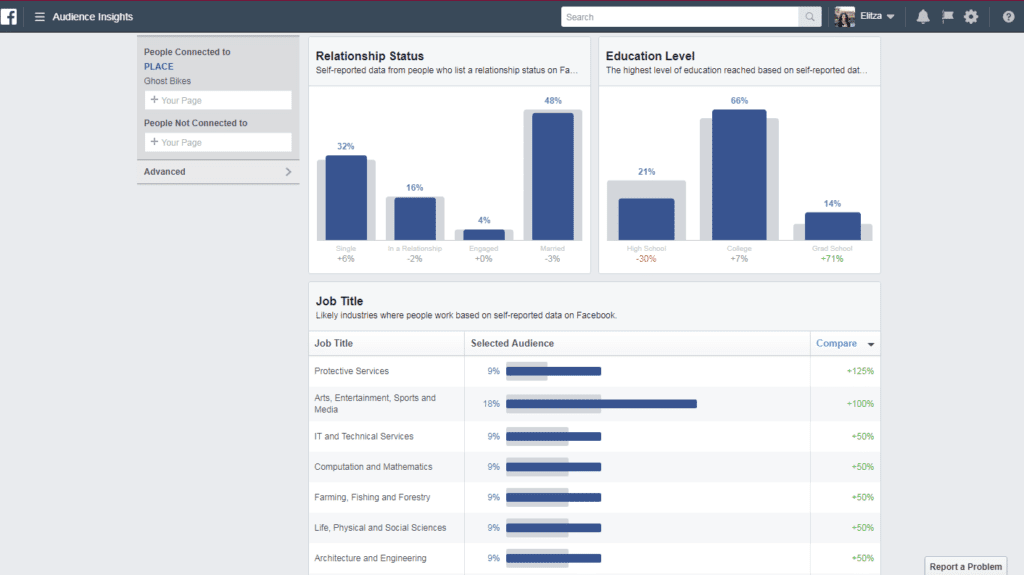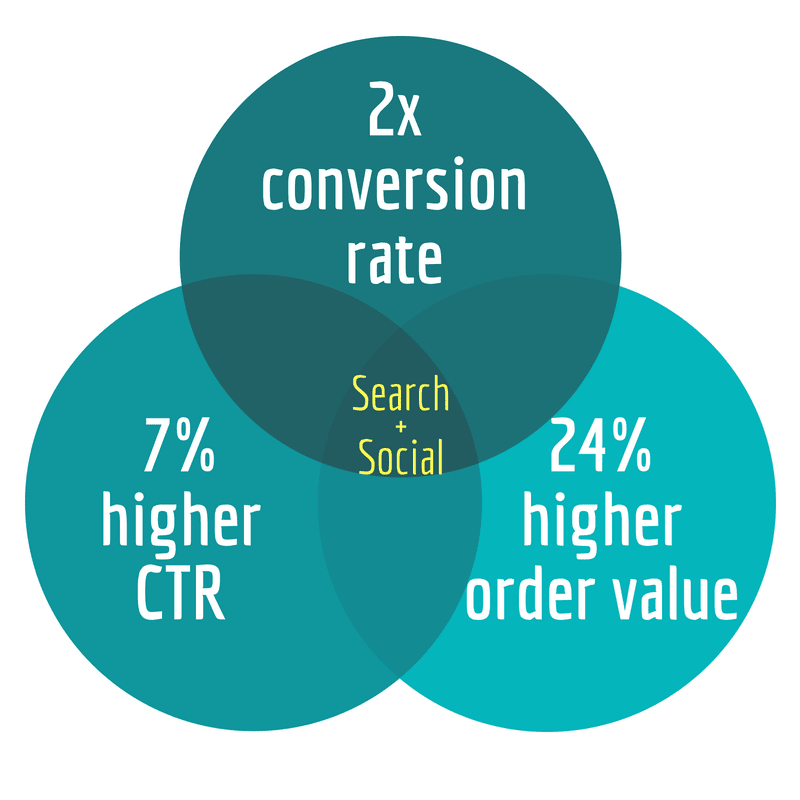How to Boost Conversions by Combining Search & Social
Learning how to properly intersect your search and social media campaigns is a crucial marketing strategy, especially for businesses in the e-commerce sector. It’s no secret that modern-day consumers use paid search and social media equally to weigh the pros and cons of a purchase. Most importantly, however, it’s been shown that combining search and social campaigns lead to doubled conversion rates and return on investment (or, in this case, return on ad spend).
At the basis of this strategy is the increased number of organic searches to your website. Look at it this way: the primary benefit of social media is increased brand awareness. If your social media page or website consistently creates quality, shareable content, then that content will get shared. As a result, your social media page will gain a larger following which will, in turn, increase organic traffic to your website.
Not only does this mean increased potential for conversions, but increased organic traffic will give your website a significant SEO boost. As Google assesses the increasing popularity of your website, it will begin to populate higher in the search results. In hindsight, this sounds like a logical cycle. While the results of effectively integrating your search and social efforts are extremely rewarding, there is a bit of work that needs to come in. So how do you get started on creating synergy between the two?
1. Create Quality Content
This may sound obvious, but you’ll be amazed at the number of marketers that struggle with this. Having a blog page on your website is crucial because it becomes the ideal outlet for relevant and shareable content. Make sure to share blog posts on your social media page and also share them with other publishers for link building. Once you’ve shared blog posts to your social media pages, give them a boost. Boosting your Facebook posts is an affordable way to increase your following and gain some audience insights.
2. Assess Your Audience
Google Analytics offers some demographic data but is not nearly as detailed as Facebook Insights. When you go to the Ad Manager on Facebook, you can conveniently view detailed data about your Facebook audience. This includes relationship status, education level, job title, interests, etc. Having this kind of in-depth data is incredibly valuable when it comes to determining your target paid search audience, as well as the kind of keywords you would like to use. For example, maybe you’re a beverage retailer whose audience is primarily in the business world and shows an interest in health and fitness. Then, you might create a series of ads showcasing your drink as a “healthy option for busy professionals on the go.”

3. Listen Closely to the Conversation
Tune in to the dialogue happening between your social media followers. More importantly, keep track of recurring themes, phrases, or keywords that are used – whether in the comment section of your posts, review section, etc. Seeing the words people associate with your brand will allow you to later plug these keywords into Google AdWords and ensure you are optimizing your sites for the words and phrases that people are searching.
4. Check Your Attribution Model
On Google Analytics, make sure that your attribution model is accounting for all the touchpoints in a customer’s journey to converting. Many businesses use last-click attribution models (whether it be Last Interaction, Last Non-Direct Click, or Last AdWords Click). These account for only the last, and most recent channel, users clicked through before converting. Using a Linear attribution is a better approach so that you can follow each touchpoint in a user’s conversion path, from paid search to social media to email, etc. This allows you to see where paid search and social media fall within a user’s path to converting, and therefore gauge what tactics are working.
There is plenty of data to support the integration of search and social efforts, but knowing exactly how to do so is key. By properly implementing this strategy, you open an opportunity to upsell and cross-sell your products. This is done by retargeting, which will increase revenue. Create segmented lists of users that have purchased products through your site, taking their conversion path into account, and use that knowledge to then target those consumers with ads for complementary products. This is easily done on Google by adding a Google remarketing code to your website and can be done on Facebook using Custom Audiences. Retargeting is quite effective, and a Kenshoo study shows that users who see a paid search ad for a product after already being exposed to it on social media generate a 7% higher click-through rate and a 24% higher Average Order Value.

While search and social are powerful tools all on their own, they are more groundbreaking when used together. The better that you make this strategy work, the more organic searches you’ll obtain, and the less you’ll need to spend on paid search/advertising. Increased revenue and increased ROI – that is what you can gain from this unified approach.









